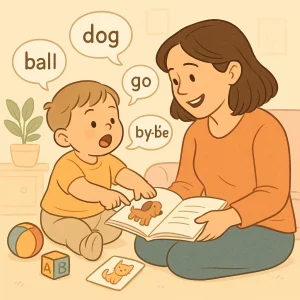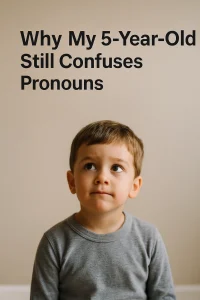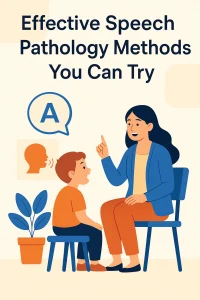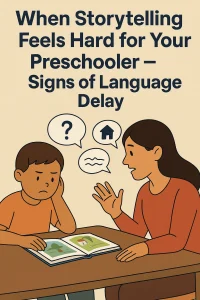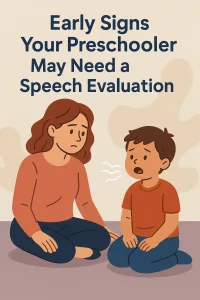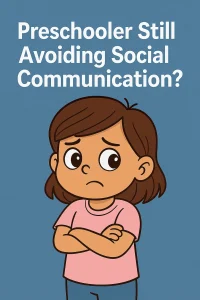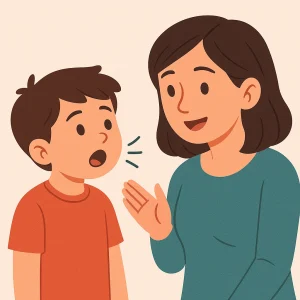Understanding Speech Impediments: What Starts with ‘W’
Last Updated: September 12, 2024
Have you ever noticed your child struggling with certain sounds, like the ‘W’ sound? Speech impediments are more common than you might think, and addressing them early is crucial for your child’s communication skills and confidence. Speech impediments can make it difficult for children to articulate words clearly, which can impact their social interactions and academic performance.
In this article, we will focus specifically on understanding and addressing speech impediments involving the ‘W’ sound. You’ll learn what a speech impediment is, why the ‘W’ sound can be challenging for some children, and practical tips to help your child overcome these difficulties. Whether you’re a concerned parent or an educator, this guide is designed to provide you with valuable insights and actionable advice.
What is a Speech Impediment?
A speech impediment is a type of communication disorder where a person has difficulty forming words or sounds correctly. This can include stuttering, lisps, and problems with specific sounds like the ‘W’ sound. Speech impediments can affect how clearly someone speaks, making it hard for others to understand them.
Speech impediments can have a significant impact on communication. For children, this can mean struggling to express themselves at school or with friends, which can affect their confidence and social skills. It’s essential to address these issues early to help children develop clear and effective communication skills.
Also read: Help Your Child Master Social Skills: 6 Pragmatic Language Tips
When it comes to the ‘W’ sound, children might find it particularly challenging. The ‘W’ sound requires a specific lip and tongue position, which some children might find difficult to master. This can lead to the ‘W’ sound being mispronounced or substituted with other sounds. Understanding the nuances of the ‘W’ sound and how to address any related speech issues can greatly improve a child’s ability to communicate clearly.
Also read: Perfecting the /w/ Sound: Articulation Therapy Tips for Kids
The Development of the ‘W’ Sound
Children typically begin to develop the ability to produce the ‘W’ sound around the age of 2. This is one of the earlier sounds that children learn because it involves relatively simple lip and tongue movements.
By age 2, you might start hearing your child attempt the ‘W’ sound, often in simple words like “water” or “wow.” These early attempts might not be perfect, but it’s a sign that your child is on the right track.
By the age of 3, most children can produce the ‘W’ sound consistently and accurately in their speech. This means that words like “will,” “want,” and “window” should come out clearly. However, if your child is still having difficulty with the ‘W’ sound by age 4, it might be time to consider seeking help from a speech-language pathologist.
It’s also worth noting that some children might substitute the ‘W’ sound with other sounds. For instance, instead of saying “window,” they might say “lindow.” This substitution is a common sign that your child might need additional support to master the ‘W’ sound.
Identifying ‘W’ Sound Impediments
Recognizing signs that your child might have difficulty with the ‘W’ sound is the first step in addressing the issue. Here are some key indicators to watch for:
Signs of Difficulty with the ‘W’ Sound
- Mispronunciation: Your child might struggle to produce the ‘W’ sound correctly, resulting in unclear speech. For example, they might say “wa-wa” instead of “water.”
- Substitutions: A common sign of ‘W’ sound impediments is substituting the ‘W’ sound with another sound. For instance, your child might say “yight” instead of “white.”
- Avoidance: If your child avoids words that contain the ‘W’ sound, it might be because they find it challenging to pronounce them correctly.
- Frustration: Noticeable frustration when trying to speak or being misunderstood by others can also indicate speech difficulties, including issues with the ‘W’ sound.
Common Substitutions for the ‘W’ Sound
- ‘W’ to ‘R’: Some children might substitute the ‘W’ sound with an ‘R’ sound, such as saying “rabbit” instead of “wabbit.”
- ‘W’ to ‘L’: Another substitution is using an ‘L’ sound in place of ‘W,’ like saying “lindow” for “window.”
- ‘W’ to ‘Y’: It’s also common for children to replace the ‘W’ sound with a ‘Y’ sound, such as “yater” instead of “water.”
Importance of Early Intervention
Addressing speech issues early is crucial for several reasons. Early intervention can significantly impact your child’s ability to communicate effectively, boosting their confidence and social skills.
Why Addressing Speech Issues Early is Crucial
- Enhanced Communication Skills: Early intervention helps children develop clear speech patterns, making it easier for them to express themselves and be understood by others. This is vital for their social interactions and academic performance.
- Boosted Confidence: When children can communicate clearly, their confidence grows. They are more likely to participate in classroom activities, engage with peers, and express their thoughts and feelings without hesitation.
- Improved Learning: Clear communication is essential for learning. Children who speak clearly are better able to follow instructions, ask questions, and engage in classroom discussions. This sets a strong foundation for academic success.
Potential Long-Term Impacts if Left Unaddressed
- Social Challenges: Children with unresolved speech impediments may face social isolation. Difficulty in being understood can lead to frustration and withdrawal from social activities, impacting their ability to form friendships and interact with others.
- Academic Difficulties: Speech impediments can affect reading and writing skills. Mispronunciation of words can lead to difficulties in spelling and comprehension, hindering academic progress.
- Emotional Impact: Struggling with speech can cause emotional distress. Children may feel embarrassed or frustrated, leading to low self-esteem and anxiety. This emotional toll can affect their overall well-being and development.
Techniques for Helping Your Child with ‘W’ Sound Impediments
Helping your child master the ‘W’ sound can be an engaging and rewarding experience. Here are some effective techniques that can make this process easier and more fun for both you and your child.
Verbal Cues
Verbal cues are about using your voice to demonstrate and guide your child in making the correct sounds.
- Demonstrating the ‘W’ Sound: Start by clearly demonstrating the ‘W’ sound. Make sure to exaggerate the movement of your lips and vocalize the sound slowly. This helps your child see and hear how the sound is made. Say “watch” or “we” slowly, emphasizing the ‘W’ sound.
- Practicing Simple Syllables: Once your child is familiar with the sound, practice simple syllables. Repeat syllables like “we,” “wo,” and “ew” to help them get comfortable with the ‘W’ sound in different contexts. Make it a fun game by turning it into a song or a chant.
Visual Cues
Visual cues involve using visual aids to help your child understand how to produce the sound.
- Using Mirrors and Pointing to the Mouth: A mirror can be a great tool for this. Have your child watch their own mouth as they attempt the ‘W’ sound. You can also demonstrate the sound while pointing to your mouth, showing them exactly how to shape their lips.
- Blowing Kisses to Practice Lip Formation: Blowing kisses mimics the lip movement required for the ‘W’ sound. Practice blowing kisses together, then transition to making the ‘W’ sound. This helps your child associate the lip shape with the correct sound.
Tactile Cues
Tactile cues involve physical touch to guide your child in making the sound correctly.
- Physically Guiding the Child’s Mouth: Gently guide your child’s mouth into the correct position if they are struggling. This might involve placing your fingers lightly on their lips to help them pucker correctly for the ‘W’ sound.
- Feeling the Vibration of Vocal Cords: The ‘W’ sound is voiced, meaning it vibrates the vocal cords. Have your child place their hand on their throat as they make the sound to feel this vibration. You can demonstrate by putting their hand on your throat first, then letting them try on their own throat.
Tips for Parents
Helping your child with speech impediments can be a rewarding journey. Here are some practical tips to support your child’s progress and ensure a positive experience.
Encouragement and Positive Reinforcement
Positive reinforcement is crucial for building your child’s confidence. Praise their efforts and celebrate their successes, no matter how small. Here are some ways to offer encouragement:
- Praise Efforts, Not Just Results: Focus on the effort your child is putting in, saying things like, “I love how you tried to say ‘window’ today!”
- Create a Reward System: Use a simple reward system to motivate your child. This could be stickers, a favorite snack, or extra playtime.
- Be Patient and Supportive: Understand that progress takes time. Encourage your child with a calm and supportive attitude, reassuring them that it’s okay to make mistakes.
Consistency in Practice
Consistency is key to improving speech impediments. Regular practice helps reinforce the correct pronunciation and makes it easier for your child to remember. Here are some tips for maintaining consistency:
- Set a Routine: Incorporate speech practice into your daily routine. This could be during mealtime, bedtime, or playtime.
- Short, Frequent Sessions: Keep practice sessions short and frequent. This prevents your child from feeling overwhelmed and keeps the practice enjoyable.
- Use Everyday Activities: Integrate speech practice into everyday activities. Talk about objects around the house, read books, and sing songs that include the ‘W’ sound.
When to Seek Professional Help from a Speech-Language Pathologist
While home practice is essential, sometimes professional help is necessary. Here are some signs that it might be time to consult a speech-language pathologist:
- Lack of Progress: If your child shows little to no improvement despite consistent practice, it may be time to seek professional advice.
- Frustration and Avoidance: If your child becomes increasingly frustrated or avoids speaking, a professional can provide specialized techniques and support.
- Persistent Mispronunciations: If your child consistently substitutes or mispronounces the ‘W’ sound beyond the typical age range, a speech-language pathologist can offer targeted intervention.
Conclusion
Addressing speech impediments early is crucial for your child’s communication skills and overall development. Early intervention can help prevent long-term impacts on their social interactions, school performance, and confidence. By recognizing the signs of ‘W’ sound impediments and using the techniques we discussed, you can support your child effectively.
Remember to use verbal, visual, and tactile cues to help your child practice the ‘W’ sound. Incorporate fun activities like Articulation Bingo to make practice enjoyable. Consistent practice and positive reinforcement will keep your child motivated. If you notice ongoing issues or lack of progress, consider seeking help from a speech-language pathologist. For more resources and expert advice, visit Wellness Hub. We offer guides and tools to help you on your child’s speech development journey.
Frequently Asked Questions:
1. What are speech impediments?
Speech impediments are communication disorders where a person has difficulty forming words or sounds correctly. This can include stuttering, lisps, and problems with specific sounds like the ‘W’ sound.
2. How can I tell if my child has a ‘W’ sound impediment?
Signs of a ‘W’ sound impediment include mispronunciation, such as saying “wabbit” instead of “rabbit,” substituting the ‘W’ sound with other sounds, or avoiding words with the ‘W’ sound.
3. Why is early intervention important for speech impediments?
Early intervention helps prevent long-term impacts on social interactions, academic performance, and self-esteem. Addressing speech issues early can lead to better communication skills and confidence.
4. What techniques can help my child with ‘W’ sound impediments?
Techniques include verbal cues (demonstrating the sound), visual cues (using mirrors), and tactile cues (feeling the vibration of vocal cords). Fun activities like Articulation Bingo
5. How often should I practice speech sounds with my child?
Consistency is key. Short, frequent practice sessions are more effective than long, infrequent ones. Incorporate practice into daily routines like mealtime, Storytime, and playtime.
6. When should I seek help from a speech-language pathologist?
If your child shows little to no improvement despite regular practice, becomes frustrated or avoids speaking, or consistently mispronounces the ‘W’ sound beyond the typical age range, it’s time to seek professional help.
7. What resources are available to help with speech development?
For more tips and resources, visit Wellness Hub. We offer comprehensive guides and support to help you navigate your child’s speech development journey.
About the Author:
Anuradha Karanam
Speech-language pathologist (7+ years of experience)
Anuradha Karanam is a skilled speech-language pathologist with over 6 years of experience. Fluent in Tamil, Telugu, Hindi, and English, she specializes in parent counseling, speech sound disorders, fluency assessment, and speech-language evaluations. Anuradha excels at working with children with developmental disorders, offering creative and effective therapy programs. Currently, at Wellness Hub, she holds a BASLP degree and is registered with the RCI (CRR No A85500). Her patience, ambition, and dedication make her a trusted expert in her field.
Book your Free Consultation Today
Parent/Caregiver Info:
Client’s Details:
* Error Message


